Ever find yourself staring at those beautiful, pre-cut bundles of fabric goodness, wondering what on earth to do with them? You know the ones those lovely little squares of fabric called fat quarters. They’re too big to be scraps but not quite big enough for a huge project, and they’re just begging to be turned into something amazing. Well, you’re in luck!
Whether you’ve just unboxed your very first sewing machine or you’re looking for a quick and simple project to get your creative juices flowing, this is the place for you.
Forget complicated patterns and intimidating instructions. We’re talking about simple, stress-free projects that will have you feeling like a sewing pro in no time. From cute and practical pouches to stylish home decor and thoughtful gifts, we’ve rounded up 35 (yes, 35!) fantastic ideas that are just waiting for your needle and thread.
So, grab that stash of fat quarters you’ve been saving, fire up your machine, and let’s get ready to make some magic! Happy sewing, everyone!
And here are 35 simple sewing projects with fat quarters:
1. Bowl Cozies
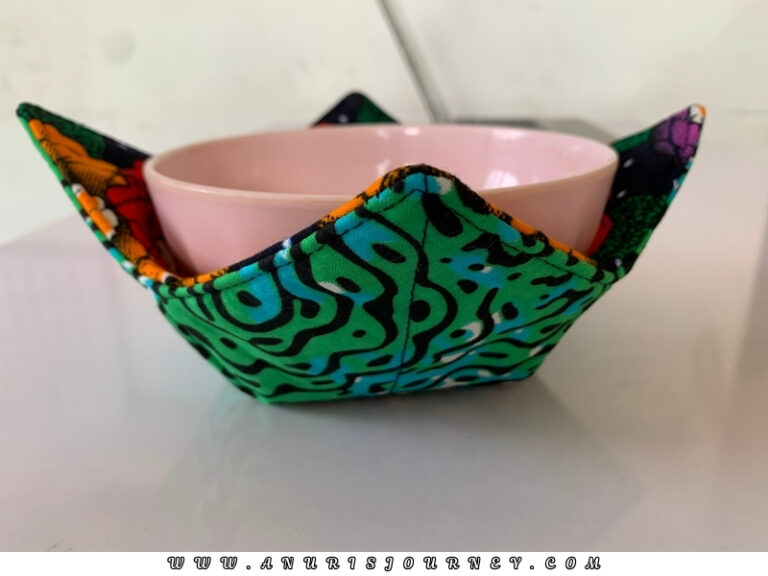
See tutorial:
Bowl cozies are padded fabric holders that fit snugly around soup or cereal bowls, protecting your hands from heat or cold.
They are usually made with two pieces of cotton fabric (inside and outside), cut from fat quarters, with heat-resistant batting layered in between for insulation.
To create the bowl shape, small darts are sewn into each corner before the layers are stitched together and turned right side out.
This project is perfect for beginners because it teaches layering, quilting, and shaping while producing a practical kitchen accessory that can be washed and reused.
2. Fabric Coasters
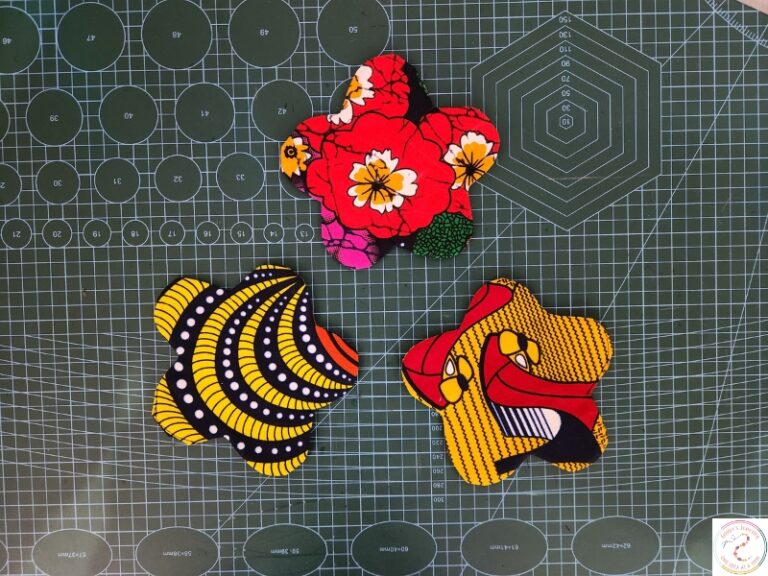
See tutorial:
Fabric coasters are small mats used under cups and glasses to keep surfaces free from water rings, scratches, and heat damage.
A fat quarter can be cut into several coaster-sized squares or circles, paired with a second piece of fabric and optional batting or interfacing for structure. The layers are stitched together, turned right side out, and topstitched for a clean finish.
This project is quick and beginner-friendly, teaching precision in cutting, turning corners neatly, and adding finishing stitches, all while creating handy household items or thoughtful handmade gifts.
3. Reusable Bowl Covers

Reusable bowl covers are eco-friendly fabric alternatives to plastic wrap, designed to stretch over bowls and keep food fresh.
One fat quarter is enough for a cover, cut into a circle that is larger than the bowl opening, with the edges finished by sewing a casing and threading elastic through so it grips tightly around the rim.
Beginners will practice sewing curves, making casings, and working with elastic while creating something practical and sustainable.
These covers are washable, durable, and can be lined with waterproof fabric if desired, making them both functional and stylish kitchen tools.
4. Pot Holders

See tutorial:
Pot holders are thick quilted fabric squares or mitts used to safely handle hot cookware. They are good example of simple sewing projects with fat quarters.
They are made by layering two fat quarters with heat-resistant batting in between, quilting the layers to secure them, and binding the edges for durability. A small fabric loop is often added at one corner for hanging.
This project is ideal for beginners learning quilting basics, layering, and binding, and it results in a useful kitchen tool that can be personalized with different fabrics.
Pot holders are also a great way to practice working with heat-proof materials while still keeping the sewing process simple.
5. Mug Rugs

Photo credit:
Mug rugs are small rectangular mats that are bigger than coasters but smaller than placemats, designed to hold a mug and a snack together.
They are made with two fat quarters and batting between them, they can be quilted or left plain and are often finished with binding around the edges.
Beginners can practice cutting straight lines, quilting simple patterns, and sewing neat finishes, while also exploring creative designs like patchwork.
Mug rugs are fun to make because they are quick, useful, and customizable, making them perfect for gifts or home décor.
6. Fabric Napkins

Photo credit:
Fabric napkins are reusable cloth napkins that replace disposable paper ones, made from lightweight cotton or linen.
A single fat quarter can be cut and hemmed to make one napkin, with edges finished using a double-fold hem or serger.
This project teaches beginners how to measure, cut, press, and stitch clean straight hems, which are essential sewing skills.
Napkins are practical for everyday use, eco-friendly, and can be made to match table settings or seasonal themes.
They are also a quick beginner project that introduces neatness and consistency in sewing.
7. Fabric Placemats
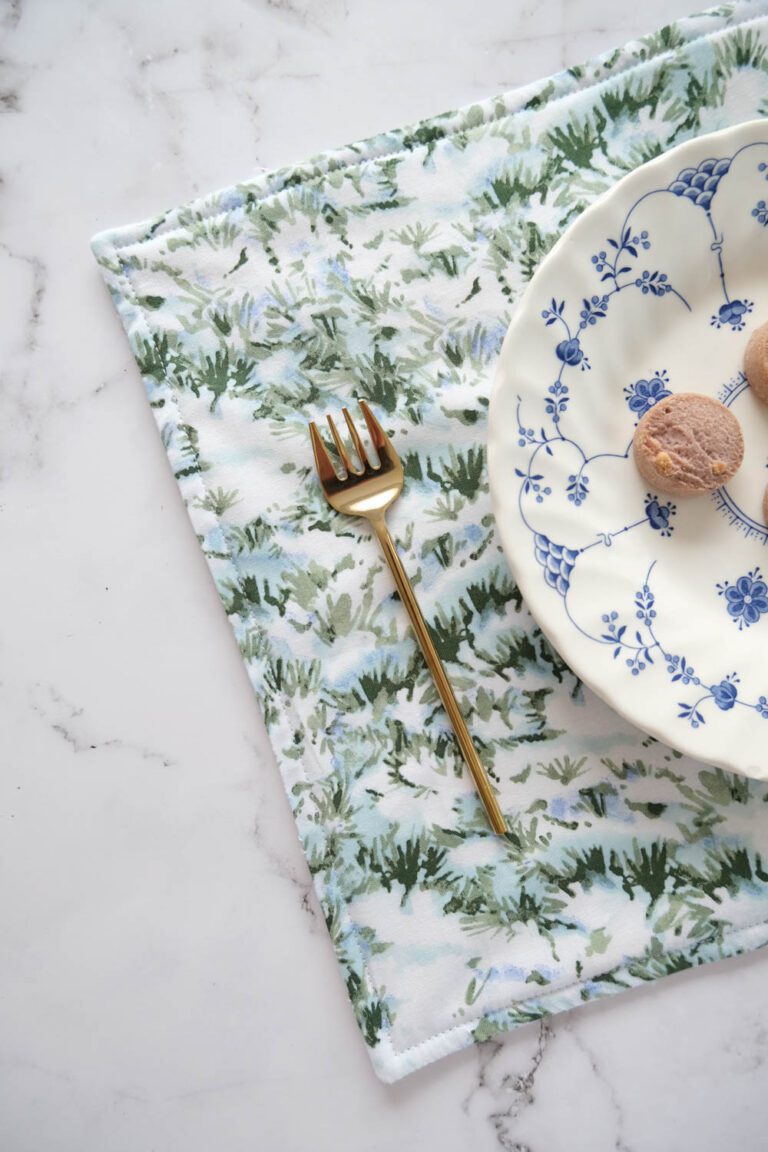
See tutorial:
Fabric placemats are rectangular mats placed under plates to protect tables from spills and scratches while adding a decorative touch to dining settings.
They are usually made by layering two fat quarters with batting or interfacing for structure, sewing them together, and optionally quilting or topstitching for a polished look.
Beginners learn how to sew straight seams, manage larger fabric pieces, and experiment with simple quilting.
Placemats are functional, easy to customize with patterns or colors, and provide a satisfying finished piece that enhances any table setting.
8. Tea Towels
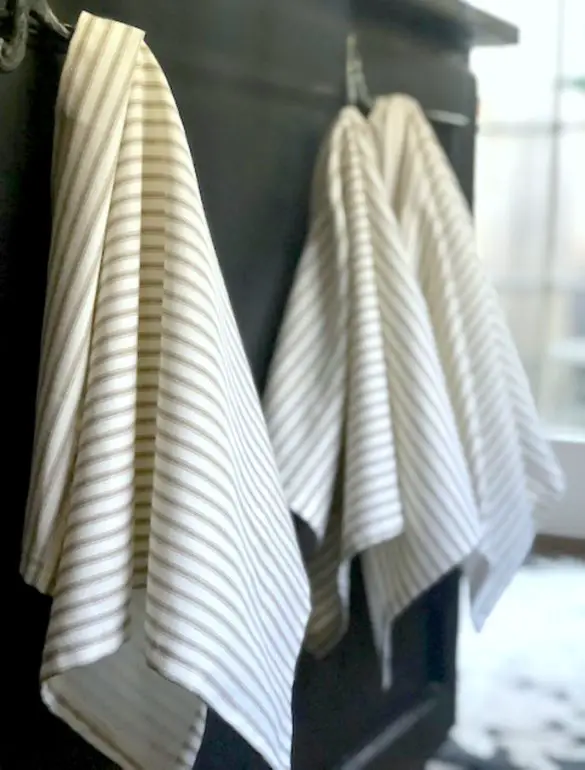
See tutorial:
Tea towels are rectangular kitchen towels used for drying dishes, lining bread baskets, or adding decorative accents to the kitchen.
A fat quarter makes a small towel, which is created by neatly hemming all four edges and optionally adding a loop for hanging.
This project focuses on straight stitching and clean hems, making it one of the simplest and fastest beginner projects.
Tea towels are also versatile, as they can be made in fun prints for seasonal décor or personalized with embroidery, making them both functional and decorative.
9. Small Table Runner

See tutorial:
A small table runner is a narrow fabric strip that runs along the center of a dining or coffee table, used for decoration and surface protection.
Several fat quarters can be pieced together in a patchwork style, or a single fat quarter can serve as the base with batting and backing for extra thickness. The layers are stitched together and topstitched or quilted for strength and style.
Beginners learn piecing, quilting basics, and sewing larger straight seams, while the finished runner adds a handmade touch of elegance to any table.
10. Fabric Baskets
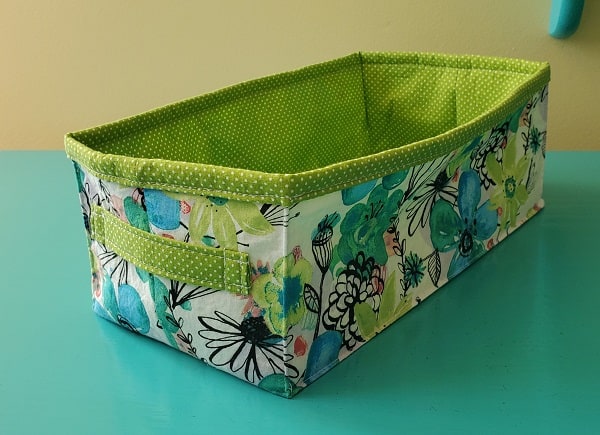
See tutorial:
Fabric baskets are soft yet structured containers used for organizing small items such as sewing tools, toys, or toiletries.
They are made by sewing together two fat quarters (one for the outer fabric and one for the lining) with interfacing or batting in between to give the basket stiffness and shape.
Boxed corners are sewn at the base to help the basket stand upright, and optional handles can be added.
This project introduces beginners to shaping techniques, layering, and working with interfacing, while the finished baskets are practical, stylish, and highly customizable.
11. Zipper Pouches
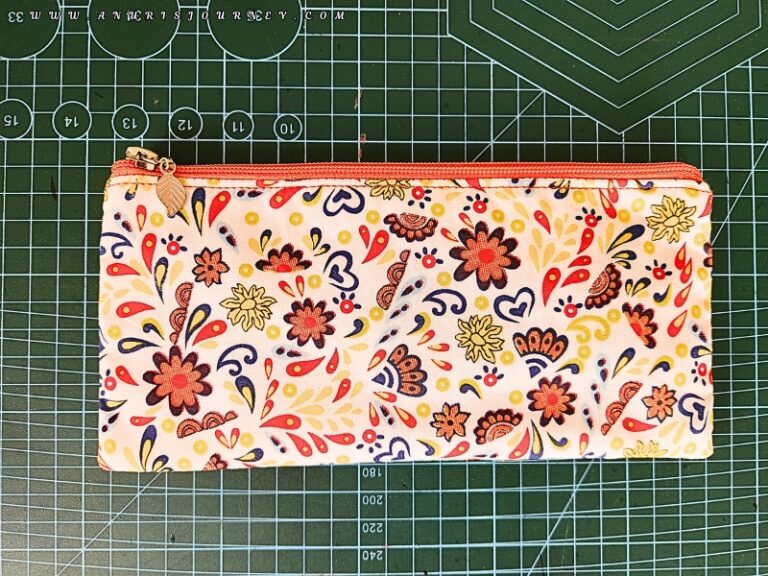
See tutorial:
Zipper pouches are small, flat bags that close with a zipper, used for storing makeup, coins, stationery, or travel essentials.
They are made with two fat quarters (one for the outer fabric and one for the lining), plus a zipper, they are sewn by sandwiching the zipper between fabric layers before stitching around the pouch.
This project helps beginners practice installing zippers, a skill that looks advanced but becomes simple with repetition while still working on a small, manageable item.
Zipper pouches are versatile, giftable, and endlessly customizable in size and style.
12. Drawstring Bags

Drawstring bags are simple fabric bags that close at the top when cords or ribbons are pulled, making them great for gift bags, toy storage, or travel organization.
A single fat quarter can be folded, stitched along the sides, and finished with a top casing to thread the drawstring through.
Beginners learn basic bag construction, sewing casings, and creating neat seams while producing a reusable and functional item.
These bags are quick to make, eco-friendly, and perfect for using up small fabric cuts.
13. Fabric Key Fobs
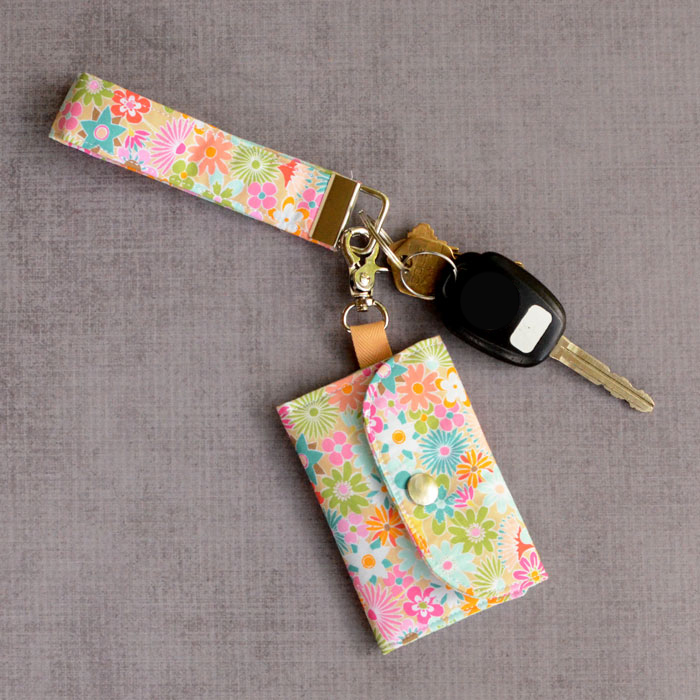
See tutorial:
Fabric key fobs are one of the cute sewing projects with fat quarters. They are small strips of fabric turned into keychains, often with hardware or a loop to hold keys.
A fat quarter can be cut into several narrow strips, reinforced with interfacing, folded, and stitched to make them sturdy. Hardware is added at the end to attach the keys.
This project is beginner-friendly because it involves straight sewing and working on small, simple pieces while producing a stylish, functional accessory.
Key fobs are quick to make, great for gifts, and ideal for scrap fabric use.
14. Hanging Wall Pockets
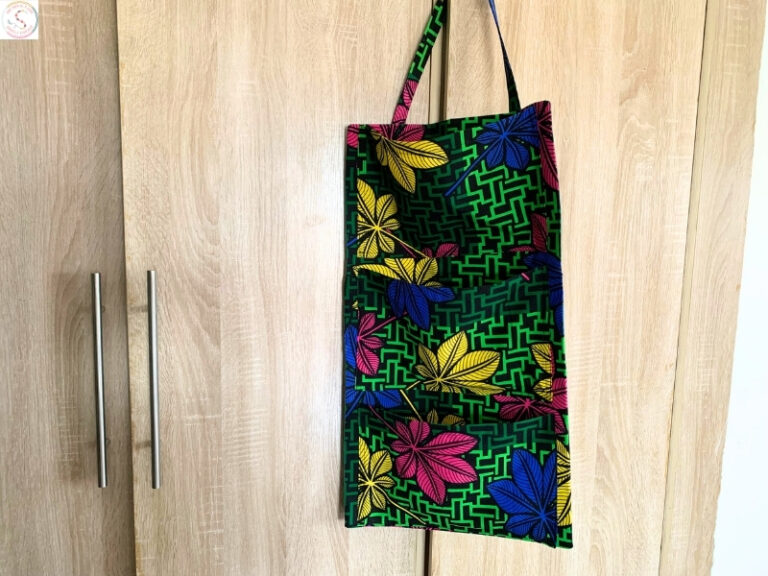
See tutorial:
Hanging wall pockets are fabric organizers with multiple compartments that hang on a wall or door, perfect for holding mail, pens, or small tools.
They are made by layering fat quarters, each piece is folded to create pockets and then stitched onto a backing fabric, often with loops or dowels for hanging.
This project teaches beginners how to layer and stitch multiple fabric sections neatly while creating a practical storage solution.
Wall pockets are customizable in size and number of compartments, making them both decorative and functional.
15. Cord Keepers/Wraps

See tutorial:
Cord keepers, also called cord wraps, are one of the simple sewing projects with fat quarters. They are small fabric pieces with Velcro or snaps used to neatly bundle earphones, chargers, or cables.
A fat quarter can be cut into several rectangles or fun shapes, sewn with batting or interfacing for structure, and finished with fasteners.
This project is quick, simple, and teaches how to add closures like Velcro or snaps.
Beginners can make many in a short time, and the finished pieces are useful for keeping cords tangle-free in bags, making them great handmade gifts or craft fair items.
16. Bookmarks (Fabric or Quilted)
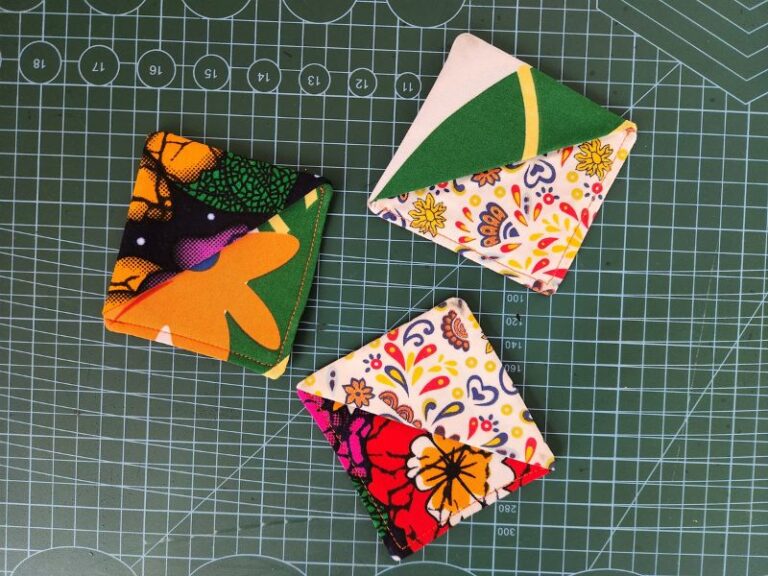
See tutorial:
Fabric bookmarks are one of the easy sewing projects with fat quarters. They are slim strips of fabric used to mark book pages, and they can be made plain, quilted, or embellished.
A fat quarter can be cut into multiple long rectangles, stitched with interfacing or batting for sturdiness, and finished with neat topstitching or decorative touches like tassels.
This project is very beginner-friendly, requiring only straight lines and simple finishing.
It’s an excellent way to practice precision sewing while producing quick, giftable items that are lightweight and easy to personalize.
17. Pencil Cases

See tutorial:
Pencil cases are small zippered pouches specifically sized to hold pens, pencils, and other stationery.
Using two fat quarters, one for the outer fabric and one for the lining, plus a zipper, beginners sew the pouch in a rectangular or boxy shape.
The project teaches zipper installation, straight seams, and lining construction while still being manageable in size.
Pencil cases are highly practical for everyday use, customizable with different fabrics, and make excellent gifts for students or office workers.
18. Jewelry Pouch

See tutorial:
A jewelry pouch is a small fabric bag with drawstrings or compartments, used to safely store rings, necklaces, or earrings.
It can be made from one or two fat quarters by sewing a circular or square base with added fabric dividers inside for organization.
Beginners learn how to construct small bags, add casings, and work with lining, resulting in an elegant and functional project.
Jewelry pouches are compact, travel-friendly, and make thoughtful handmade gifts.
19. Coin Purses
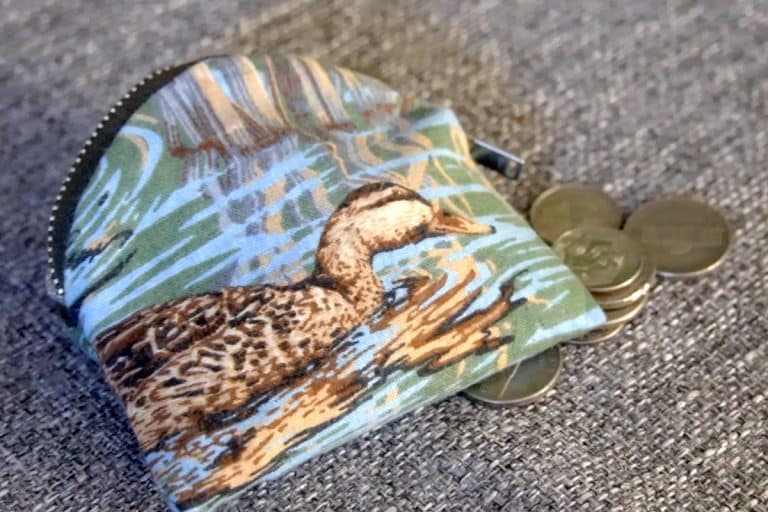
See tutorial:
Coin purses are tiny fabric pouches used for holding loose change, small accessories, or even earbuds.
They can be made with a zipper, snap, or flap closure, and usually require only small fabric pieces cut from a fat quarter. The outer fabric is often paired with a lining for durability, and the pouch is stitched into a compact size.
Beginners gain experience with closures, turning small projects right-side out, and topstitching.
Coin purses are fast to make, practical, and great for using up fabric scraps.
20. Mini Tote Bags

See tutorial:
Mini tote bags are scaled-down versions of the classic tote, perfect for kids, small errands, or carrying lightweight items.
Two fat quarters are usually enough for the outer fabric and lining, with straps made from fabric strips or webbing.
Construction involves sewing the bag body, adding lining, and attaching handles, which helps beginners practice bag-making techniques like boxed corners and sturdy seams.
Mini totes are stylish, functional, and provide a satisfying introduction to sewing larger, structured items without requiring too much fabric.
21. Scrunchies
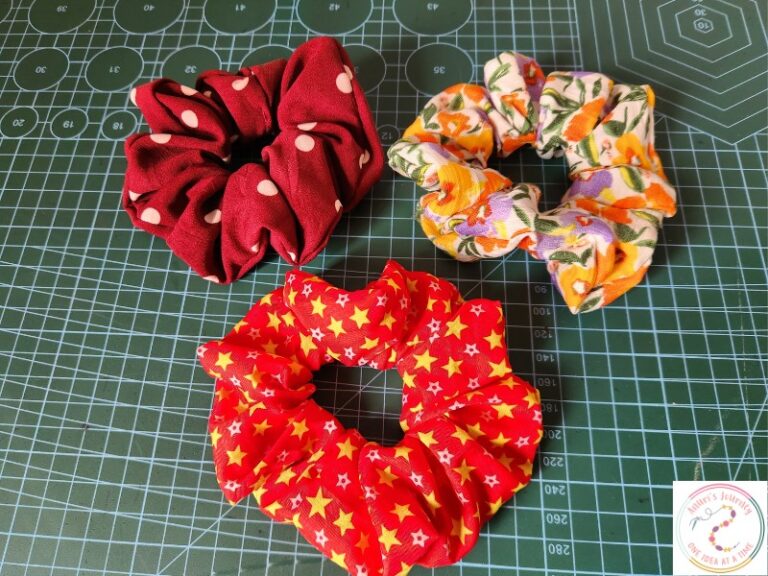
See tutorial:
Scrunchies are example of simple sewing projects with fat quarters. They are fabric-covered elastic hair ties that are gentle on hair and stylish to wear on the wrist or in a ponytail.
A fat quarter can be cut into long strips, sewn into a tube, turned inside out, and threaded with elastic before being stitched closed.
This project is quick and easy, making it one of the most popular beginner sewing projects. It teaches working with elastic, sewing tubes, and neatly closing seams while producing a fashionable and functional accessory.
Scrunchies are also perfect for using up small fabric scraps and make great handmade gifts.
22. Headbands

Headbands are fabric accessories worn around the head to keep hair back or as a fashion statement.
Using a fat quarter, beginners cut a strip of fabric, fold and stitch it into a tube, and add elastic at the back for a snug fit.
This project introduces working with elastic casings, sewing long seams, and turning fabric tubes.
Headbands are quick to sew, customizable in width or style, and practical for everyday wear, making them a satisfying project for beginners wanting both fashion and function.
23. Sleep Masks
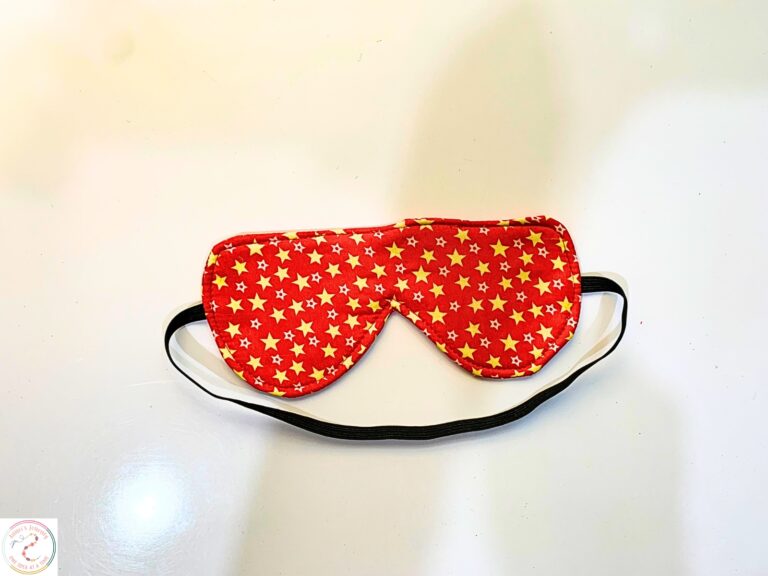
See tutorial:
Sleep masks are part of the easy sewing projects with fat quarters. They are padded eye covers worn to block light, often used for better rest or travel.
They are made from two pieces of fabric cut from a fat quarter, with batting or fleece sandwiched inside for softness, they are sewn into a curved shape with elastic straps attached.
This project helps beginners practice sewing curves, layering fabrics, and attaching elastic while creating something cozy and functional.
Sleep masks are also fun to personalize with decorative stitching or embroidery, making them great gifts.
24. Sunglasses Cases
Sunglasses cases are soft fabric pouches designed to protect glasses from scratches when stored in bags.
A fat quarter provides enough fabric for the outer shell and lining, with batting or interfacing added for padding. They can be made with a flap, snap, button, or even a simple drawstring closure.
Beginners practice sewing straight seams, turning small projects, and adding closures.
Sunglasses cases are quick to complete, highly useful, and easy to customize with fabric prints to match personal style.
25. Fabric Belts
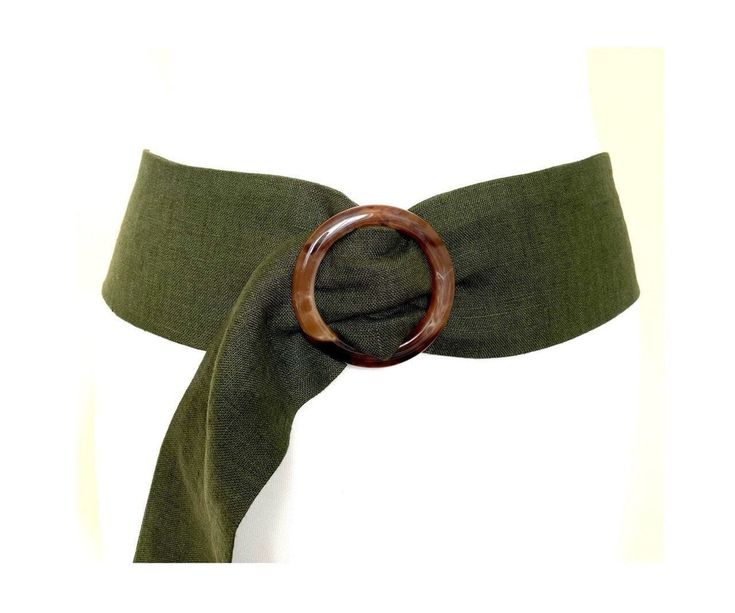
Fabric belts are long fabric strips worn around the waist, often tied or secured with D-rings.
A fat quarter can be cut into long strips and pieced together if needed, reinforced with interfacing for strength, then topstitched for durability.
Beginners learn how to sew long seams, press neatly, and add hardware like rings or buckles.
Fabric belts are practical, adjustable, and a stylish way to use bold prints, making them a fun beginner project that blends fashion with sewing basics.
26. Handkerchiefs

See tutorial:
Handkerchiefs are small, square pieces of fabric used for personal care, traditionally made from soft cotton or linen.
A fat quarter can be cut into one or two handkerchiefs, finished with rolled hems or neat double-fold hems.
This project is beginner-friendly because it mainly involves learning clean edge finishing and practicing straight stitching.
Handkerchiefs are reusable, eco-friendly, and versatile, doubling as pocket squares or napkins.
They’re also a great way to practice precision sewing while producing everyday essentials.
27. Bandanas
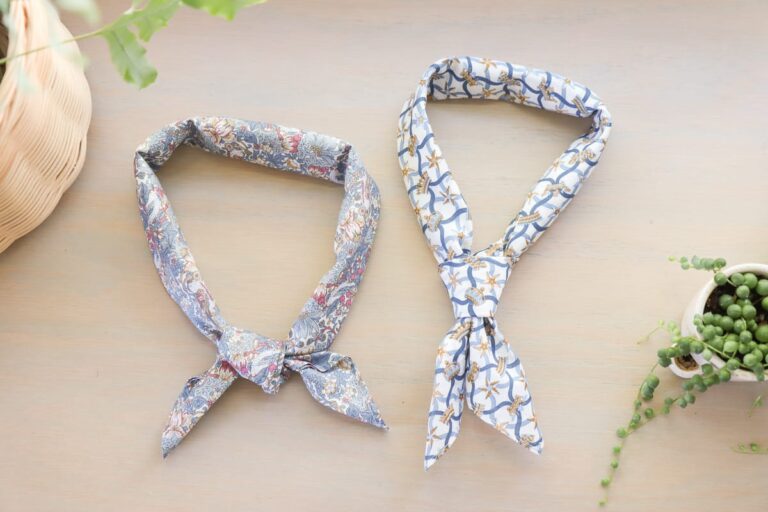
See tutorial:
Bandanas are large, square fabric accessories worn around the head, neck, or as a fashion piece.
A fat quarter can make a small bandana, with edges hemmed neatly or finished with decorative stitches.
This project is simple but teaches beginners to work with larger fabric squares and focus on neat, consistent hems.
Bandanas are versatile, used as head wraps, pet accessories, or style accents, making them both functional and fashionable.
28. Hair Bows/Clips

Hair bows or clips are small fabric accessories attached to hairpins, clips, or elastics for decoration.
They can be made by cutting small rectangles from fat quarters, folding and stitching them into bow shapes, and securing them with a center knot or band before attaching to hardware.
This project is excellent for beginners since it involves simple folding, stitching, and pressing without complicated techniques.
Hair bows are quick, cute, and customizable in size and style, making them perfect for gifts or selling at craft fairs.
29. Small Wallets/Cardholders

See tutorial:
Small wallets or cardholders are slim fabric pouches designed to hold cash, coins, or credit cards.
They are usually made with a fat quarter for the outer fabric and another for lining, reinforced with interfacing for structure, and finished with a snap, button, or Velcro closure.
Beginners learn how to sew lining, add structure, and incorporate closures, all in a small project that isn’t overwhelming.
These wallets are practical, stylish, and a great stepping-stone into more advanced bag-making.
30. Phone Sleeve/Pouch
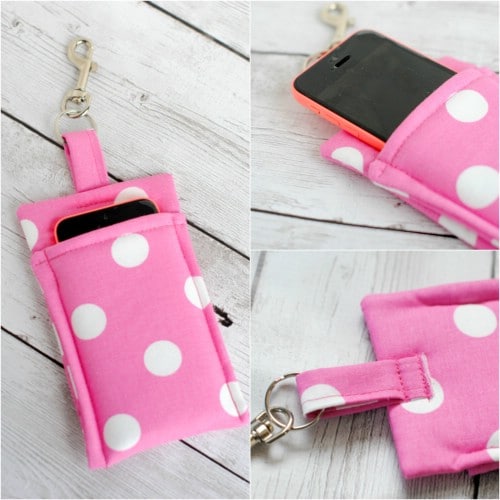
Photo credit:
A phone sleeve or pouch is a soft, padded case designed to protect a mobile phone from scratches.
Using a fat quarter for the outside and another for the lining, with interfacing or batting in between, beginners can sew a simple rectangular pouch with a flap, snap, or Velcro closure.
This project teaches straight sewing, layering, and adding closures, while still being beginner-friendly.
Phone sleeves are practical, customizable to different phone sizes, and can be made quickly, making them excellent handmade accessories or gifts.
31. Fabric Bunting/Garlands

See tutorial:
Fabric bunting or garlands are strings of triangular or shaped fabric flags sewn onto a ribbon or bias tape, used to decorate parties, nurseries, or special events.
A fat quarter can be cut into several flag shapes, backed with another piece of fabric or left single-layer, and stitched onto a long strip of bias tape or ribbon.
Beginners learn cutting uniform shapes, sewing edges neatly, and attaching multiple pieces into a continuous string.
Bunting is festive, reusable, and a fun way to showcase colorful fabrics.
32. Stuffed Hearts or Stars

See tutorial:
Stuffed hearts or stars are small decorative fabric shapes filled with stuffing, used as ornaments, toys, or keepsakes.
Fat quarters are cut into matching shapes, stitched around the edges (leaving a small opening), turned inside out, and stuffed with fiberfill before closing the seam.
This project teaches beginners how to sew curves, clip edges for smooth shaping, and finish openings neatly.
These little stuffed decorations are versatile, easy to personalize, and great for practicing sewing in small, manageable pieces.
33. Pin Cushions
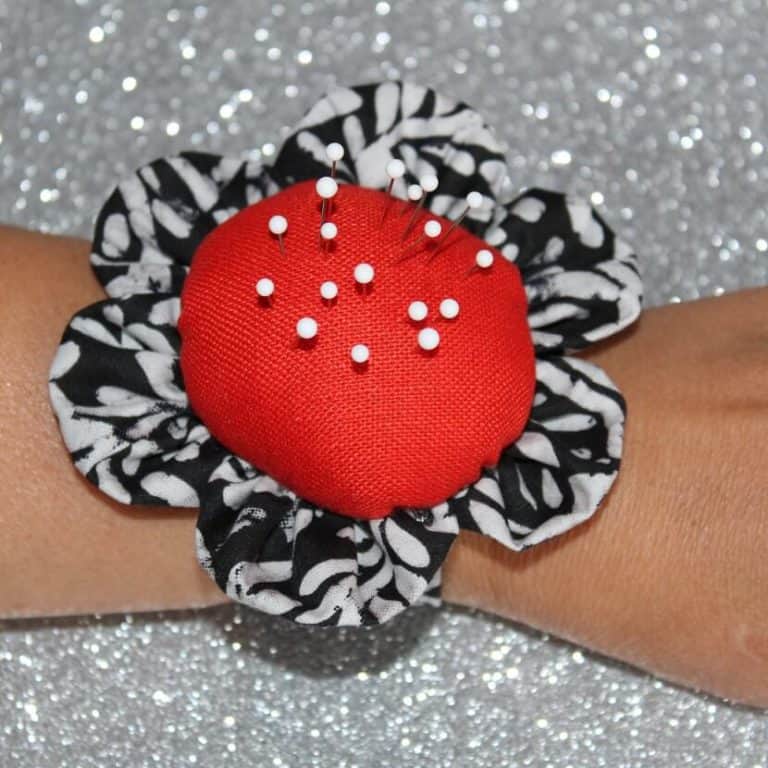
See tutorial:
Pin cushions are small padded fabric cushions used to store sewing pins and needles safely.
They can be made square, round, or novelty-shaped, using a fat quarter for both top and bottom pieces with stuffing or rice inside for firmness.
Beginners practice sewing small seams, turning projects right-side out, and stuffing evenly.
Pin cushions are quick to make, extremely useful for sewing practice, and can even be dressed up with buttons or embroidery for decoration.
34. Fabric Flowers

See tutorial:
Fabric flowers are one of the cute sewing projects with fat quarters. They are decorative blooms crafted from folded, gathered, or layered fabric petals, used for embellishments on clothing, accessories, or home décor.
A fat quarter can be cut into several petal shapes or strips, which are sewn, gathered, or rolled to create flower-like forms.
This project teaches beginners techniques like gathering, shaping, and hand stitching, all while working with small pieces.
Fabric flowers are endlessly customizable and make charming handmade accents for gifts or fashion accessories.
35. Lavender Sachets

See tutorial:
Lavender sachets are small fabric bags filled with dried lavender, used to scent drawers, closets, or as calming gifts.
Fat quarters are cut into small squares or shapes, stitched together on three sides, filled with lavender buds (or another fragrant filling), and closed with a neat seam or ribbon tie.
Beginners practice sewing small, straight seams and finishing edges neatly.
Lavender sachets are simple, eco-friendly, and delightful to make, offering both practical use and a handmade charm.


































